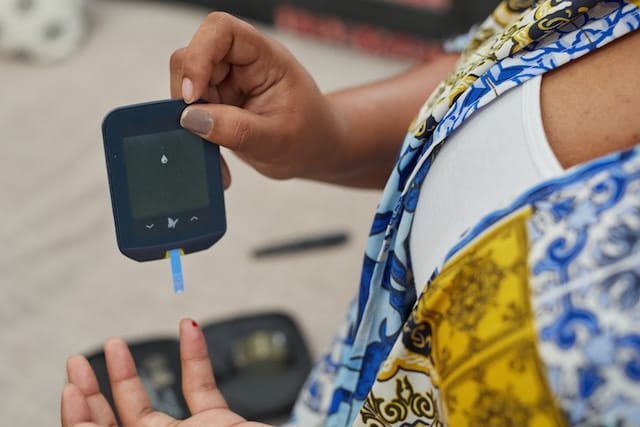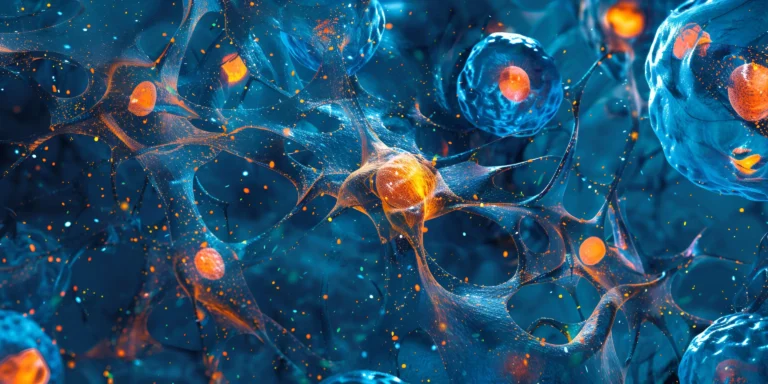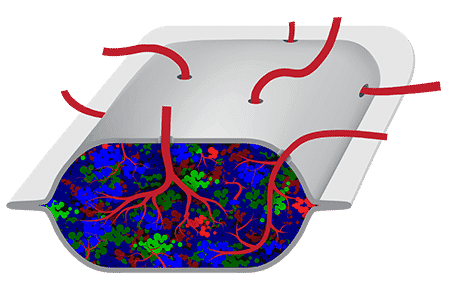What are Alpha and Beta Cells?
Many folks find it tough to grasp how their body regulates blood sugar. Alpha and beta cells, which are within clusters called “Islets of Langerhans” and are located in the pancreas, are key to this process. This piece will break down what these important endocrine cells do and how they affect your well-being, especially in diabetes.
Let’s dive into the fascinating world of insulin and glucagon regulation.
Anatomy and Function
Alpha cells and beta cells are found in the pancreas, both are in a group of clusters called “The Islets of Langerhans.” Alpha cells make glucagon, a hormone that raises blood glucose when it gets too low. Beta cells create insulin, essential for lowering high blood glucose by helping sugar get into our body’s cells. As a result, they function to help by keeping blood glucose levels in check through secretion.
These cells use paracrine signaling to balance blood glucose & play a major role in carbohydrate metabolism. Additionally, their feedback regulation ensures a stable energy supply for our bodies, showing their importance in hormone-related pancreatic secretion & blood sugar management.
Differences Between the Two Cells
After looking at the anatomy & function of alpha and beta cells, it’s crucial to know how these two cell types differ. Alpha cells mainly produce glucagon, which raises blood sugar by making the liver release stored glucose into the bloodstream.
Beta cells make and release insulin, which lowers blood sugar by allowing body tissues to absorb glucose for energy.
They also differ in where they’re located within the pancreas – alpha cells are around the outer edge while beta cells are often found at the center. Furthermore, they respond differently to various triggers; low blood sugar makes alpha cells release glucagon but high blood sugar makes beta cells release insulin.
These differences underline their critical roles in keeping blood glucose balanced within our bodies.
Medical Significance
Alpha and beta cells play vital roles in producing glucagon and insulin to manage blood sugar levels. Knowing their impact is key for managing type 1 and type 2 diabetes well.
In Relation to Type 1 and Type 2 Diabetes
Type 1 diabetes happens when the immune system attacks beta cells, cutting or stopping insulin production. As a result, this leads to high blood sugar, and a need for lifelong insulin therapy.
On the flip side, type 2 diabetes usually starts with insulin resistance, while triggering reduced beta cell function over time, leading to high blood glucose levels. This often needs lifestyle changes, pills, & maybe insulin as it progresses.
Both forms of diabetes can cause serious issues if left unchecked, stressing how critical alpha & beta cells are in balancing glucose within our bodies. Understanding them is key to creating effective treatments for these conditions.
Role of Alpha and Beta Cells in Insulin Production & Release
Alpha cells make glucagon that raises blood sugar when it falls too low. Beta cells produce insulin that lowers it by helping glucose enter body cells for energy. So, when people ask the question, “is insulin alpha or beta”? The answer is beta.
This fine balance between alpha & beta cell activities keeps stable blood sugar levels throughout the day.
Insulin production kicks off with higher blood sugars after eating while glucagon gets released when it drops like during fasting or between meals.
Together these actions by alpha & beta cells maintain proper glucose regulation within the body.
Potential Treatments Targeting these Cells
Scientists look at possible therapies targeting alpha and beta cells for treating diabetes. One method involves wrapping beta cells in a protective barrier (encapsulation) so they stay safe from the immune system but still release insulin.
Another promising path is creating drugs that help regenerate or protect existing beta cells to boost insulin production & manage blood sugars better. Plus advances in stem cell research bring hope for making new insulin-producing cells – possibly a big breakthrough for diabetes treatment.
Such innovative treatments mark major progress towards more effective management & possibly even reversing diabetes one day.
Read about a new cutting-edge pancreas preservation method for the innovative Pancreas Pack.
Conclusion
Alpha and beta cells are central for regulating our blood sugar levels. Knowing their anatomy and functions helps manage type 1 and type 2 diabetes efficiently. Each cell type plays its role: alpha makes glucagon to raise sugars while beta releases insulin to lower them.
Medical progress targeting these specific functions brings hope for better future treatments. Seeing just how important these alpha & beta cells really are can lead us toward improved therapies for those living with diabetes today.







